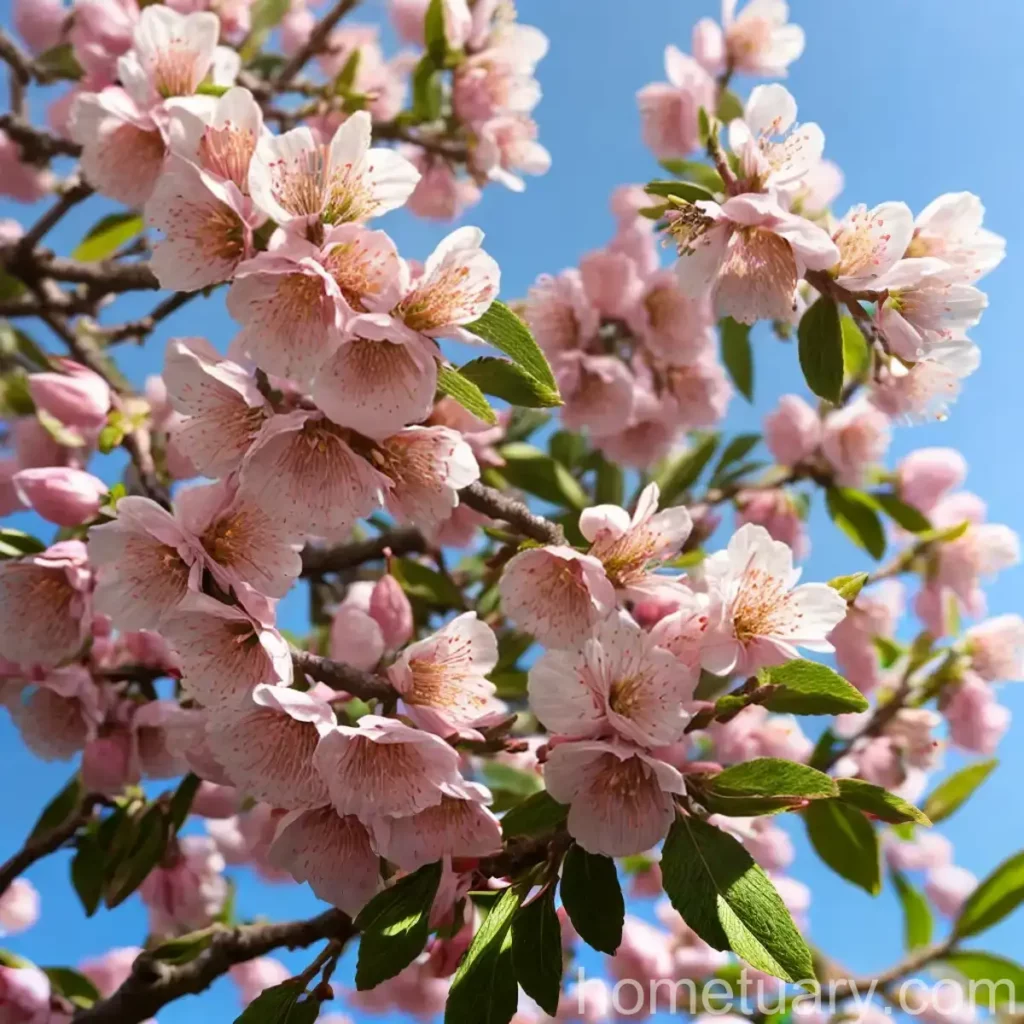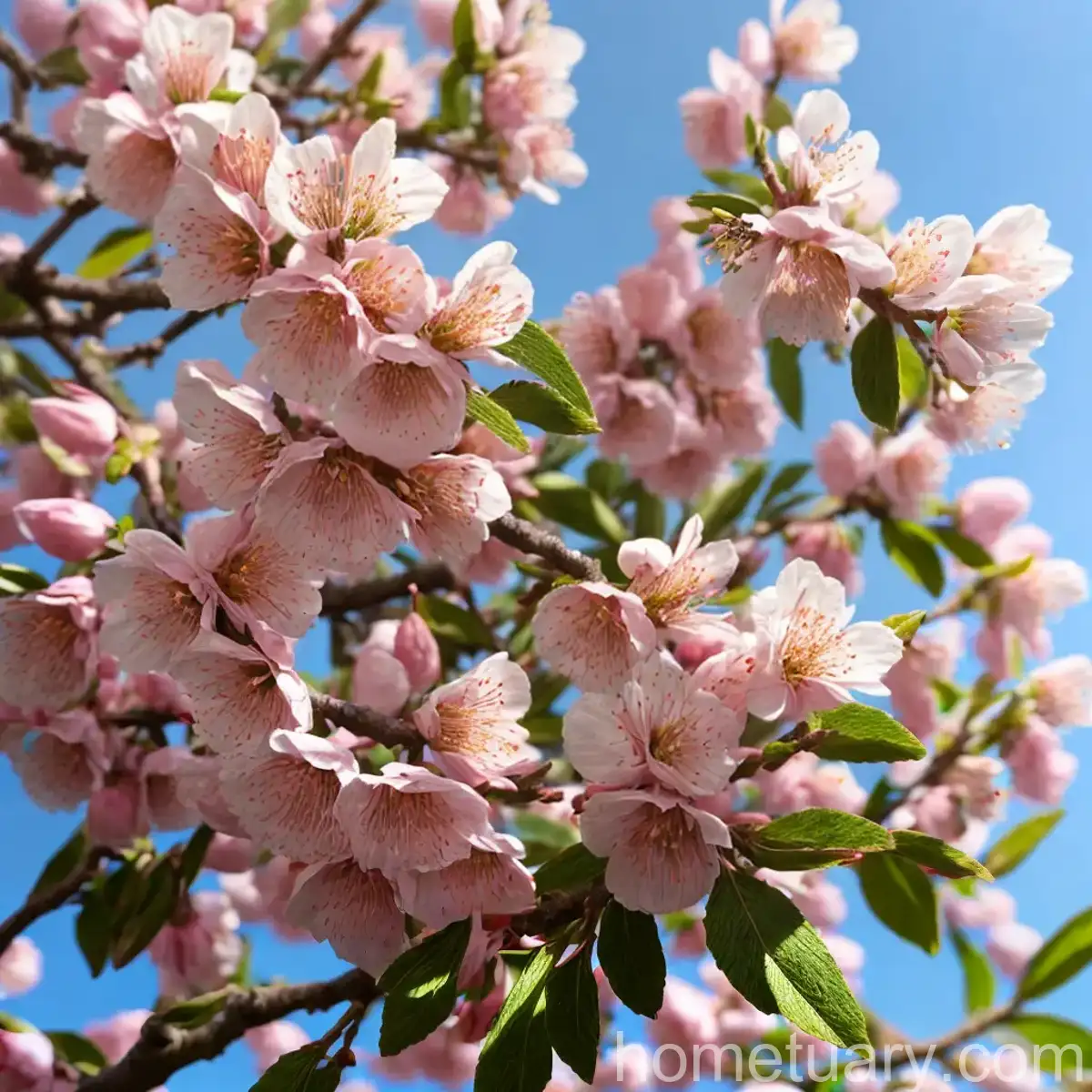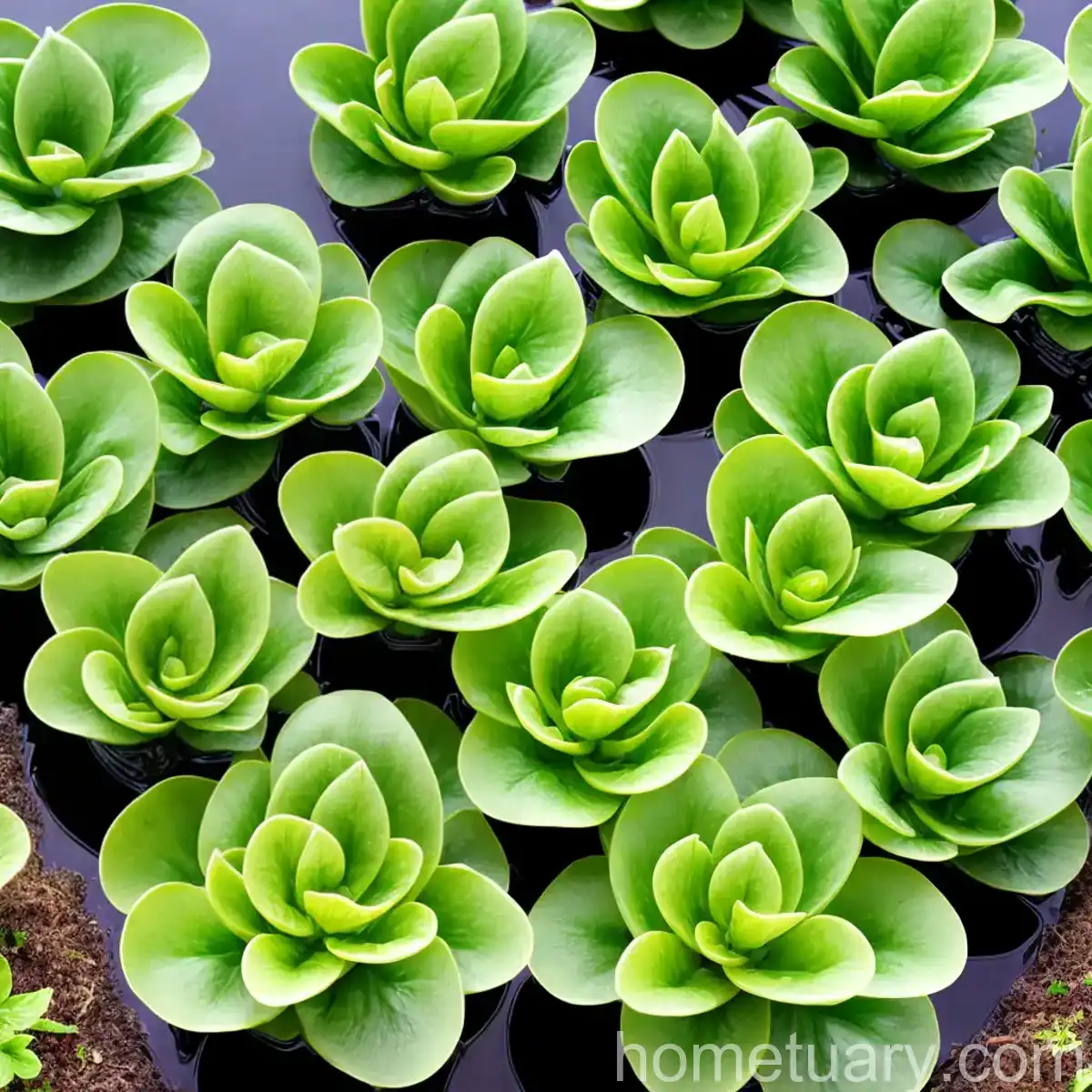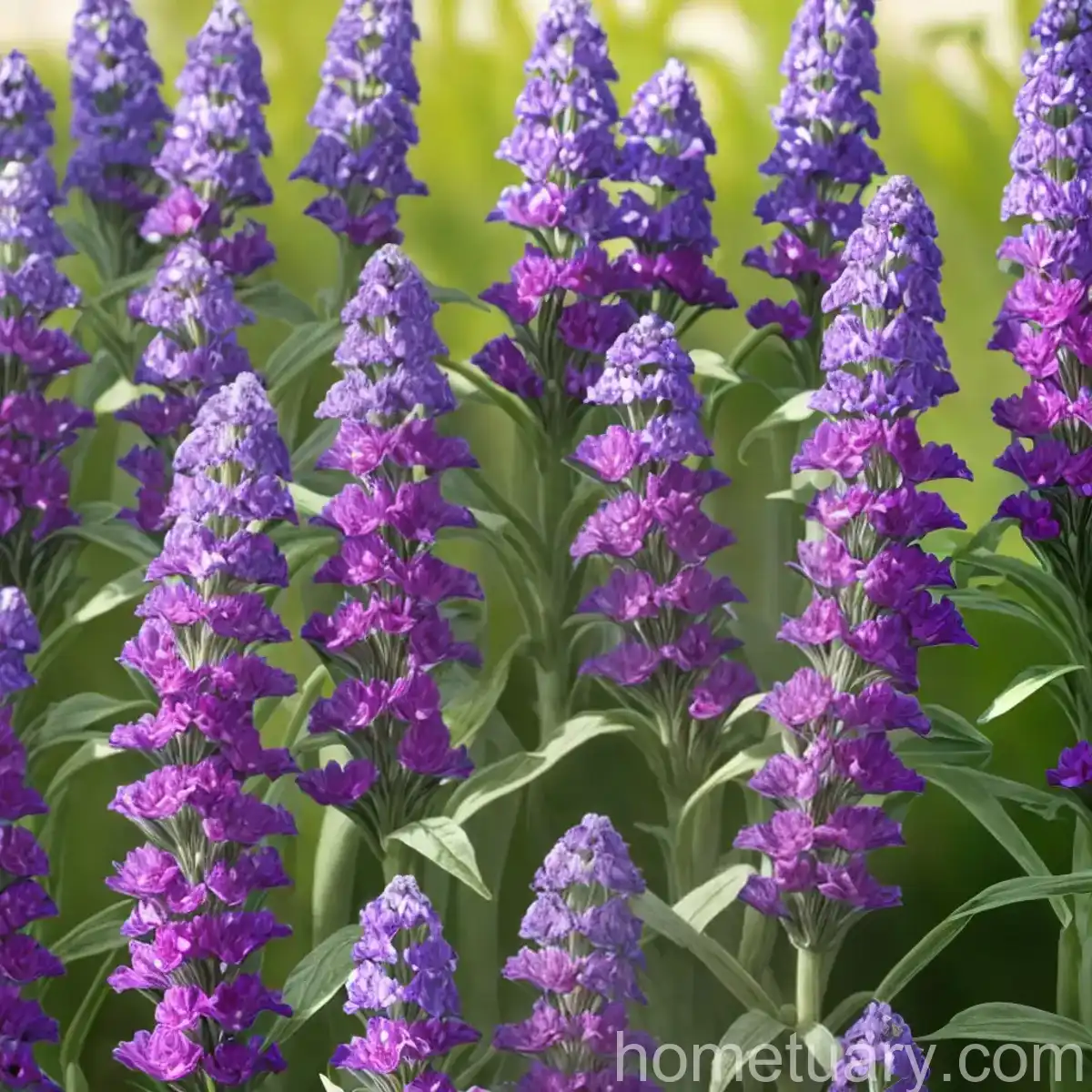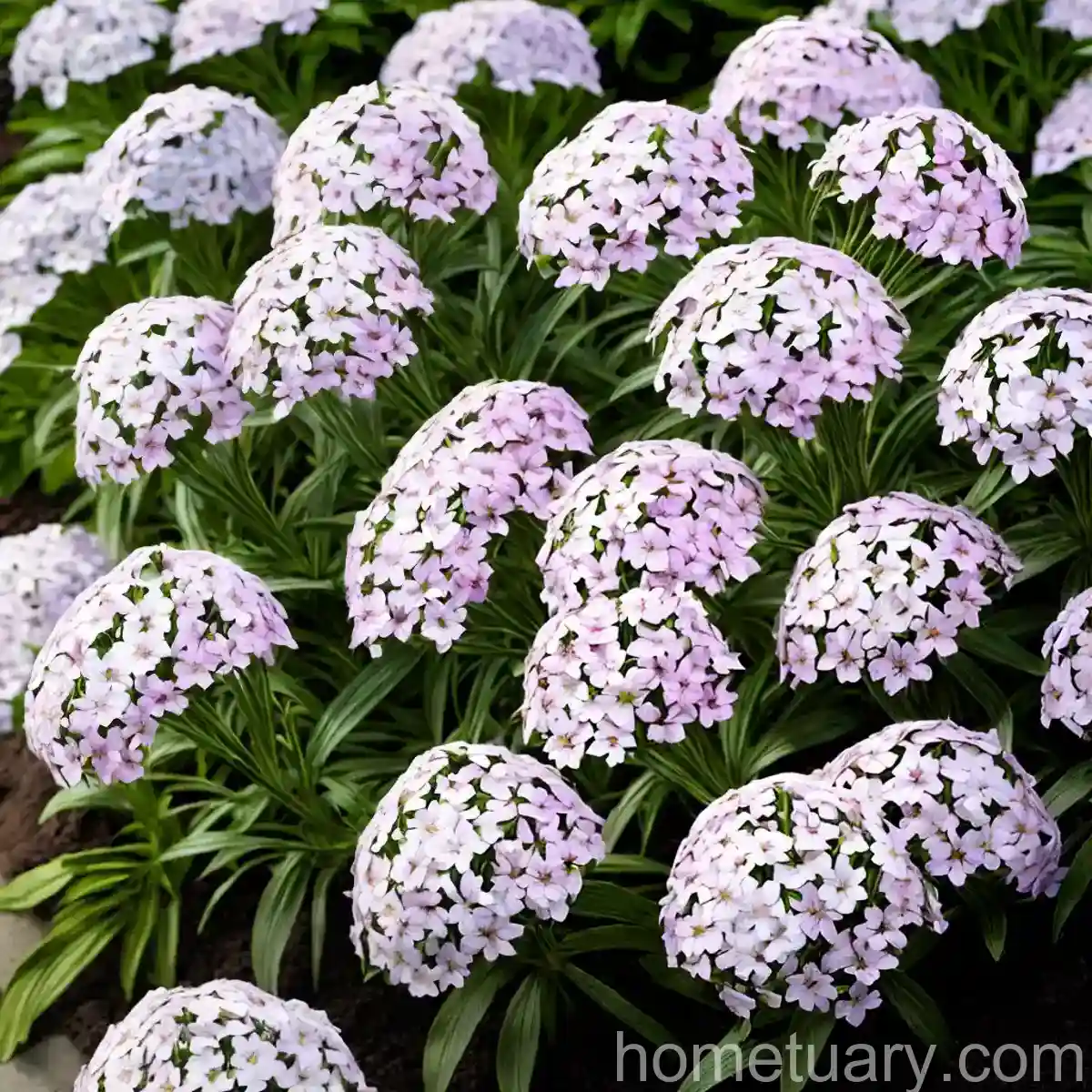What is the Flowering Almond (Prunus triloba)?
The flowering almond (Prunus triloba), also known as the double-flowering plum, is a stunning ornamental plant that is a member of the Rosaceae family. This deciduous shrub or small tree is native to Eastern Asia and is treasured for its masses of delicate pink or white blossoms that adorn its branches in early spring. Its attractive flowers, coupled with its graceful, spreading habit, make it a popular choice for gardens and landscaping purposes.
This blog post aims to delve into the various aspects of the flowering almond, including its culture, uses, care requirements, and common diseases and pests. Additionally, we will explore the botanist’s tips for nurturing this plant and uncover some fun facts about it.
Key Takeaways – Flowering Almond (Prunus triloba)
Before deep-diving into the comprehensive details, let’s briefly outline the key takeaways about the flowering almond:
- A small deciduous tree or shrub known for its masses of delicate pink or white blossoms.
- Belongs to the Rosaceae family and is native to Eastern Asia.
- Popular for its ornamental value, often used for landscaping and decorative purposes.
- Requires well-drained soil, ample sunlight, and regular watering for optimal growth.
- Susceptible to certain diseases and pests that need to be managed for its health and vigor.
Now, let’s explore the various aspects of this beautiful plant in more detail.
Culture
Uses
The flowering almond (Prunus triloba) is primarily valued for its aesthetic appeal and ornamental use. Its abundance of delicate, showy flowers makes it an excellent choice for beautifying landscapes, gardens, and parks. It can be utilized as a standalone specimen plant, incorporated into mixed borders, or planted in groups to create a striking visual impact.
Additionally, the flowering almond is often selected to enhance the charm of outdoor spaces, such as patios, walkways, and entryways, due to its lovely blossoms and graceful growth habit.
Water
Proper watering is crucial for the health and vitality of the flowering almond. During its initial establishment phase, it should be watered regularly to ensure that the soil remains consistently moist but not waterlogged. As the plant matures, it generally exhibits good drought tolerance, but it still benefits from occasional deep watering during periods of prolonged dryness, especially in the absence of natural rain.
Adhering to a watering schedule that allows the soil to dry partially between waterings while ensuring adequate moisture for the plant’s roots is key to promoting healthy growth and blooming.
Sunlight
Adequate sunlight is essential for encouraging prolific flowering and overall vigor in the flowering almond. This plant thrives in full sun to partial shade, with preference for at least six hours of direct sunlight per day. When sited in a location with plentiful sunlight, it typically produces an abundance of blossoms, showcasing its ornamental allure.
Placing the flowering almond in a spot that receives ample sunlight also aids in maintaining good air circulation around the plant, which can contribute to reducing the risk of certain diseases.
Fertilizer
To promote optimal growth and flowering, periodic fertilization is beneficial for the flowering almond. A balanced, slow-release fertilizer specially formulated for flowering shrubs and trees can be applied in early spring, just before the onset of new growth. This provides the plant with essential nutrients to support robust foliage development and abundant blossom production.
It is important to follow the manufacturer’s instructions regarding the application rates and methods, and to avoid over-fertilization, which can lead to excessive foliage at the expense of flowers.
Soil
Well-drained soil is crucial for the flowering almond’s overall health and performance. It thrives in loamy, fertile soils that have good drainage properties, thereby preventing waterlogging and root rot issues. Should the native soil have poor drainage or lack fertility, amending it with organic matter such as compost or well-rotted manure can enhance its structure and nutrient content, creating an ideal growing environment for the plant.
The pH level of the soil for flowering almond cultivation should ideally range between slightly acidic to neutral (pH 6.0-7.0), as it generally prefers these moderately acidic to neutral conditions for thriving and flourishing.
Pruning
Regular pruning is essential for maintaining the flowering almond’s desired shape, controlling its size, and promoting abundant flowering. It is recommended to perform pruning immediately after the plant has finished blooming, as this timing allows for the removal of spent blossoms and the shaping of the plant without compromising its potential for the next year’s flowers.
When pruning, it is advisable to remove any dead, damaged, or crossing branches and to selectively thin out the plant to improve air circulation and light penetration. This helps in reducing the risk of diseases and certain pests, while also enhancing the overall appearance of the flowering almond.
Propagation
The flowering almond can be propagated through multiple methods, which include:
-
Seeds: Propagation from seeds is possible but may not be the most reliable method, as the resulting seedlings may not retain the exact characteristics of the parent plant. If propagating from seeds, it is necessary to scarify or stratify the seeds to promote germination.
-
Cuttings: Semi-ripe cuttings taken in summer and treated with a rooting hormone can be successfully used to propagate new plants. These cuttings should be placed in a well-draining rooting medium and kept under controlled conditions until roots develop.
-
Division: As the plant matures, it can be divided through careful root division to produce multiple new plants that can be replanted and grown independently.
Each propagation method has its unique requirements and success rates, and choosing the appropriate method depends on the grower’s preferences and the availability of necessary resources.
Container Popularity
The flowering almond can be successfully cultivated in containers, offering a delightful way to bring its ornamental beauty to patios, balconies, and other confined outdoor spaces. When growing in containers, it is important to select a well-draining potting mix and a container with adequate drainage holes to prevent waterlogging and root rot issues.
Container-grown flowering almonds benefit from regular monitoring of soil moisture and occasional fertilization to compensate for the limited nutrient availability in the container environment. Additionally, they may require repotting every few years to prevent overcrowding of roots and to refresh the growing medium.
Common Diseases
The flowering almond is susceptible to a few common diseases that can affect its health and appearance. Some of the prevalent diseases that growers should be aware of include:
-
Leaf Spot: Caused by fungal pathogens, leaf spot can manifest as dark spots or patches on the foliage, leading to premature leaf drop and reduced vigor in the plant. It can be managed through the application of appropriate fungicides and by improving air circulation around the plant.
-
Powdery Mildew: A fungal disease that presents as a powdery white coating on the leaves and young stems, powdery mildew can weaken the plant and impair its ability to photosynthesize effectively. Regular monitoring and the use of fungicidal sprays can help prevent and control this disease.
-
Bacterial Canker: Characterized by sunken, discolored areas on the bark and stems, bacterial canker can cause dieback and weaken the plant. Pruning out infected branches and ensuring proper sanitation are important for managing this disease.
Disease Diagnosis
In diagnosing potential diseases affecting the flowering almond, close observation of the plant’s symptoms and patterns of decline is essential. Should any abnormalities or signs of disease be noticed, it is recommended to consult with a plant healthcare professional or a local agricultural extension service to accurately diagnose the issue and receive guidance on appropriate intervention measures.
Conducting periodic inspections of the flowering almond, especially during key growth stages and in response to environmental changes, can aid in early detection and prevention of disease-related problems.
Common Pests
While generally resistant to most pests, the flowering almond may occasionally face challenges from certain insects, including:
-
Aphids: These small, sap-sucking insects can cluster on the tender growth of the flowering almond, causing distortion of leaves and excreting sticky honeydew. Controlling aphids can be achieved through the application of insecticidal soaps or horticultural oils.
-
Scale Insects: Scale insects can attach themselves to the stems and leaves of the plant, feeding on its sap and impeding its growth. Spraying with horticultural oils during the dormant season is an effective approach for managing scales.
-
Borers: Borers can inflict damage by tunneling into the wood of the flowering almond, leading to weakened branches and overall decline. Detection and prompt removal of affected branches or the application of appropriate insecticides can assist in controlling borers.
Botanist’s Tips
Soil Requirements
To ensure optimal growth and flowering, the flowering almond prefers moderately fertile, well-draining soils. Incorporating organic matter such as compost or aged manure into the planting area when initially establishing the shrub/tree can help create a suitable growing medium for the plant.
Landscape Uses
The flowering almond presents versatile landscape uses, being a valuable addition to various settings. Its graceful form and attractive blossoms make it an ideal choice for:
- Ornamental plantings in home gardens and public parks
- Accentuating the beauty of walkways, driveways, and entryways
- Enhancing mixed borders and perennial beds
- Creating visual interest in courtyard gardens and smaller outdoor spaces
Late Winter Care
In late winter, the flowering almond benefits from certain care practices aimed at supporting its health and preparing it for the upcoming growing season. These can include:
- Pruning to remove any damaged or diseased branches
- Application of a balanced, slow-release fertilizer to provide essential nutrients
- Inspecting for signs of disease or pest activity and taking appropriate measures to address any issues
By providing the necessary care during late winter, growers can help ensure that the flowering almond begins its new growth phase with vigor and resilience.
Fun Facts
- The flowering almond (Prunus triloba) is also known as the “Siberian Apricot,” highlighting its classification within the Prunus genus, which encompasses various fruit-bearing trees, including apricots, cherries, plums, and almonds.
- This plant is revered for its stunning floral display, with flowers that appear in early spring and can punctuate the landscape with their charming pink or white hues.
- The flowering almond is a deciduous plant, shedding its leaves in autumn and entering a dormancy period before reawakening with fresh foliage and blossoms in the following spring.
The aforementioned details provide a comprehensive overview of the characteristics, requirements, and cultivation practices associated with the flowering almond (Prunus triloba). By understanding its needs and embracing its ornamental value, growers can cultivate this captivating plant to enrich their outdoor environments and revel in the beauty of its blossoms.
For further information and resources related to the flowering almond, the following external links can be explored:
- The American Plum (Prunus americana L.): An Underutilized Plant with a Promising Future for Sustainable Agroforestry
- Almonds: Botany, Production and Uses
- Prunus Genetics and Genomics
- Ornamental Flowering Trees in Australia
These resources offer valuable insights into the botanical aspects, cultivation techniques, and broader significance of plants within the Prunus genus, including the flowering almond, and can serve as additional references for enthusiasts and horticultural aficionados.
In conclusion, the flowering almond exemplifies the aesthetic allure and horticultural value of ornamental plants, and its presence can elevate outdoor spaces with its enchanting blossoms, making it a cherished addition to diverse landscapes and gardens. Understanding its care requirements and appreciating its natural beauty can inspire growers to cultivate and showcase this remarkable plant with enthusiasm and admiration.

